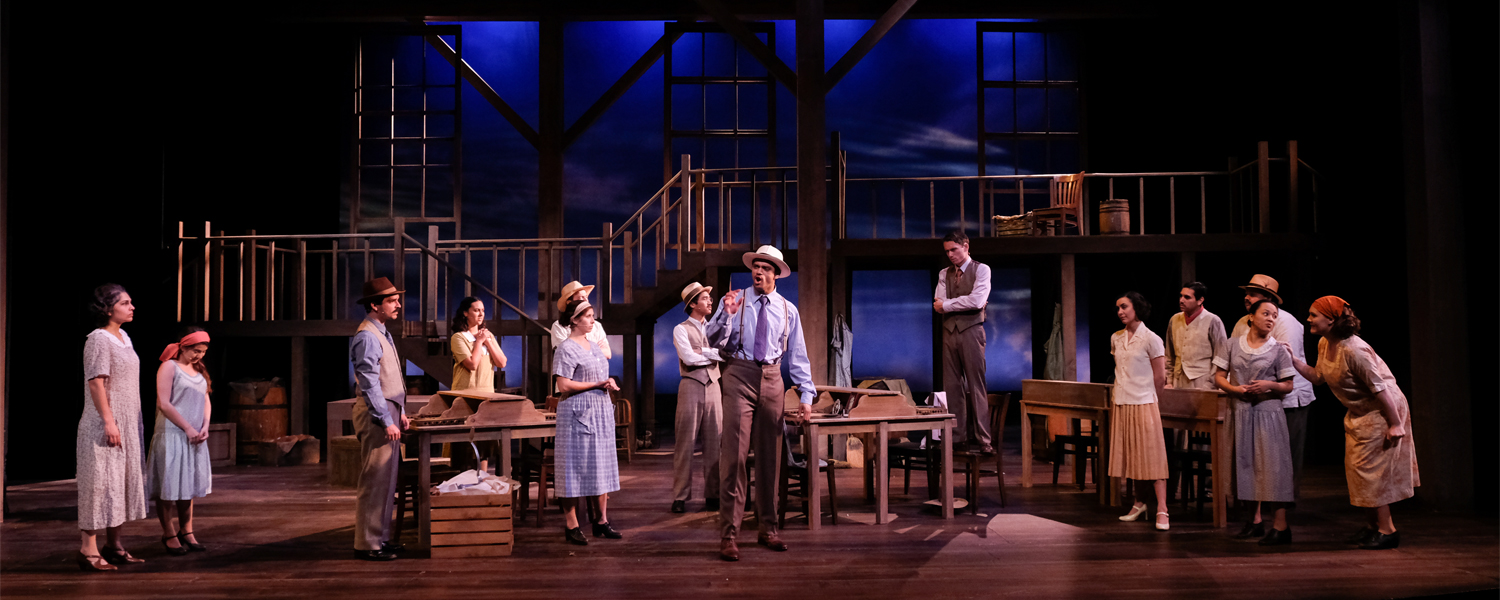Auditioning for Productions
The School of Theatre, Television, and Film produces six productions as a part of our mainstage season. To be considered for the plays, students audition during the Acting Auditions. To be considered for the musicals, students audition during the Musical Theatre Auditions.
All students, regardless of major or class year, are welcome to audition for TTF productions.
- BA Theatre Arts, Emphasis in Performance majors are required to audition for the Acting Auditions.
- BA Musical Theatre majors are required to audition for Musical Theatre Auditions.
BA Theatre Arts, Emphasis in Performance majors are required to audition for the Acting Auditions.
- Acting auditions are held on the first Thursday and Friday of every semester.
- Please prepare two monologues that combined are less than a total of three minutes (including slate).
Please contact Professor Peter Cirino [email protected] for information.
All students, regardless of major or class year, are welcome to audition for the musical theatre productions.
Students who participate in in the Musical Theatre Auditions can be considered for:
- A role in that semester’s faculty-directed musical production
- Enrollment in one of SDSU’s Musical Theatre performance classes
- Changing your major to the BA Musical Theatre degree program
- Other musical theatre opportunities
Singing auditions are held on the first Friday of every semester.
Please prepare two contrasting songs that combined are less than a total of three minutes (including slate). Bring sheet music in the correct key (accompanist will be provided).
For more specific audition information, please join the SDSU Musical Theatre email list by writing Professor Robert Meffe at [email protected].
1. Enter With Energy
- Make sure that anything you will need to perform your piece(s)—a block or chair—is on stage before you begin your introduction.
- Once the stage manager introduces you, enter with energy and enthusiasm.
- Don’t look down at the floor. Make eye contact with the directors in the audience before you begin.
- Introduce all the pieces you will do at the beginning.
- Fill the room with your voice when you do so.
- Convince us that you have a voice and personality that can fill the space.
2. Time Your Pieces
- Make sure that you’ve timed your piece(s) so that you don’t exceed the time limit.
- You will be stopped once you’ve reached the allotted amount of time.
- If you’re doing two pieces, introduce them both before you start—not in between the two.
- Make a short, effective transition between the two pieces so that we know when one has ended and the next begun.
- End your piece(s) so that we know you’re done.
- Make eye contact with the directors, say “Thank You,” and exit graciously.
3. Use The Space
- Although a taped line or “X” may be marked on the floor to indicate the place from which you should introduce yourself, you’re not required to stand in this one place throughout your performance.
- Try to notice which areas of the stage are lit.
- Use the space effectively.
- Let us know by the way you present your piece(s) that you’re comfortable both being still and moving on stage.
- Feel free to stand still, sit on the floor or on a chair or block, and/or move about the playing area.
- Avoid aimless pacing. If you don’t know how or where to move, stay in one place.
4. Enjoy Yourself
- This is perhaps the most important element of the audition.
- Let us see that you love to perform.
- Share with us your love of the theater and the pieces that you’re presenting for us today.
- We want you to do the best job you can.
- Relax, breathe, and enjoy “living on stage under imaginary circumstances.” Break a leg!
5. Dress Appropriately
- Dress in “business casual” attire so that you present yourself in a professional manner. Attire should be neat, clean and fit well. No cut-offs. Try not to wear all black.
- Wear appropriate, comfortable shoes. No backless shoes, thongs, “flip-flops,” or clunky, thick-soled shoes. Wear your hair so that your face is fully visible and you don’t have to brush it back to keep it out of your face.

